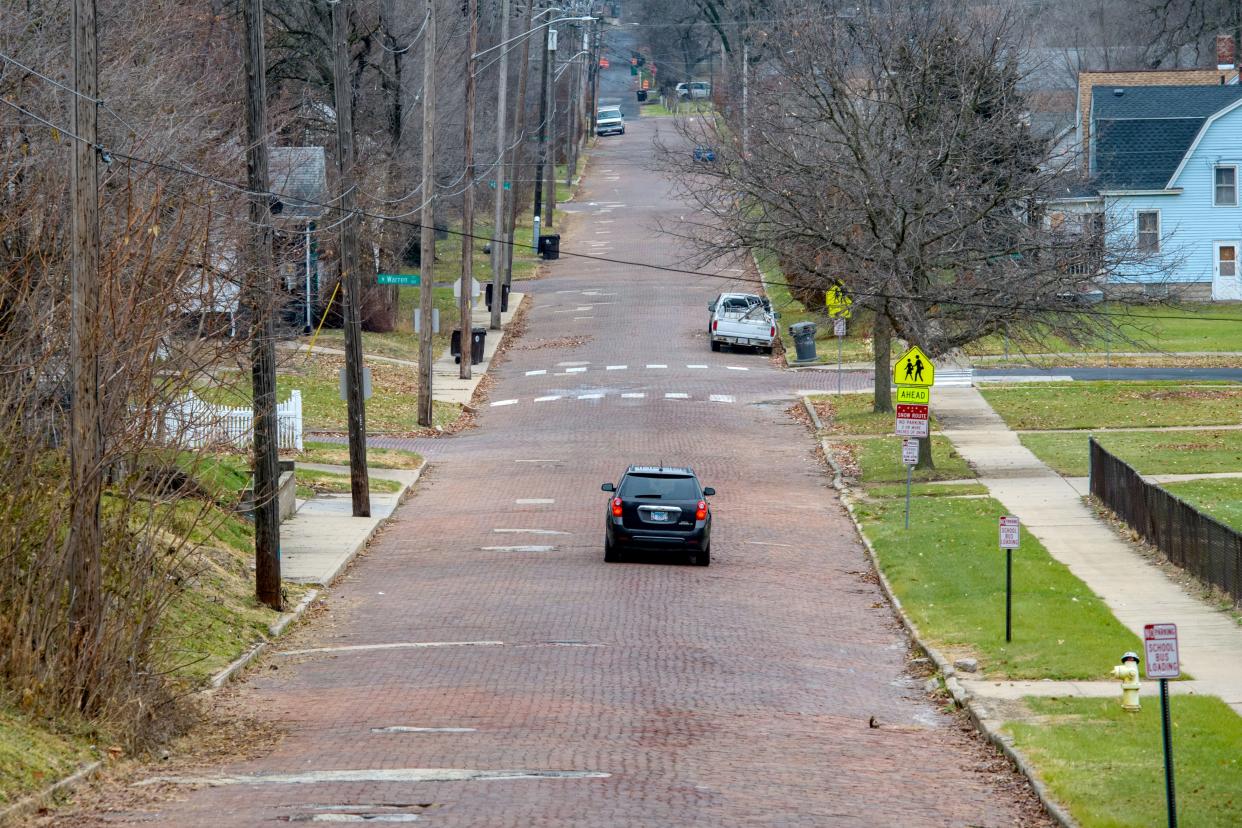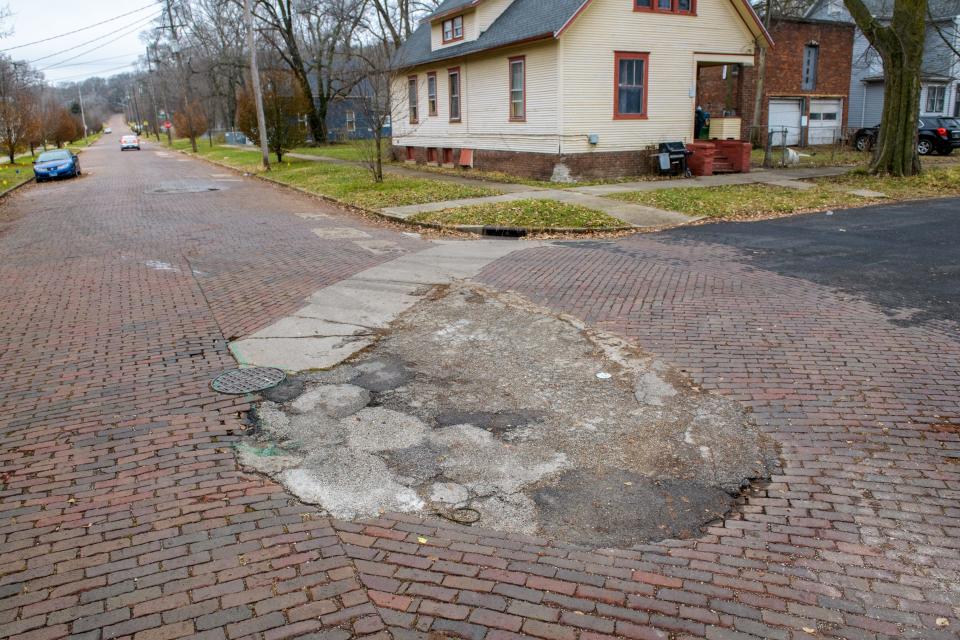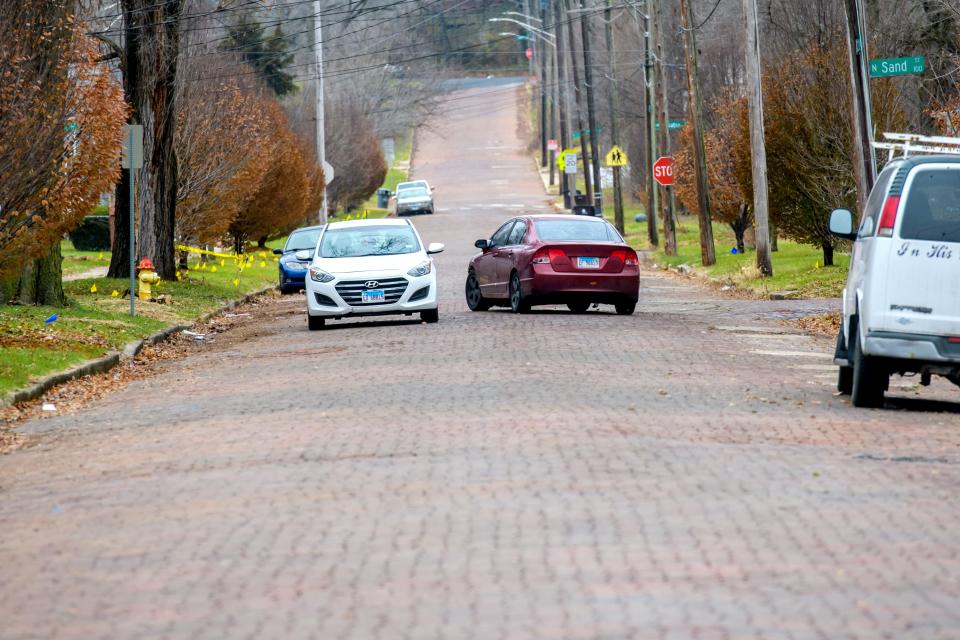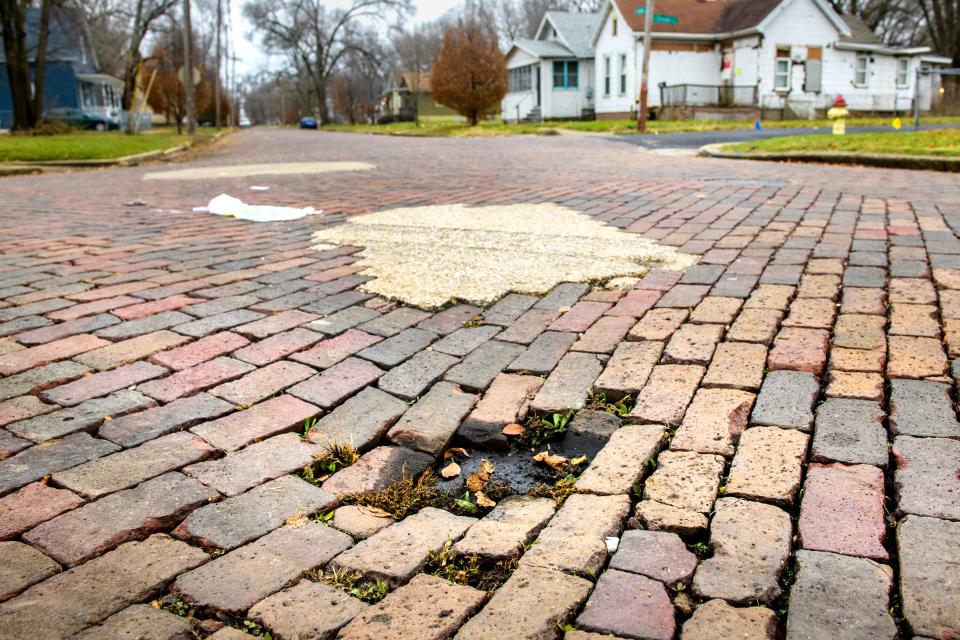Character or costly relic? Brick street protections set off a debate in Peoria

Peoria's historic brick streets will continue to be protected after the City Council directed city staff to expel any notions of replacing sections in South Peoria.
Peoria Public Works proposed a plan to the City Council at its Nov. 14 meeting that would have lifted protections on a handful of brick street intersections in South Peoria, allowing them to be replaced with traditional concrete as part of the city's broader combined sewer overflow repairs.
Public Works had proposed replacing intersections of brick streets at West Aiken Avenue and South Stuebenville Street; West Aiken Avenue and North Sand Street; and West Aiken Avenue and South DuSable Street with concrete.
That proposal was met with immediate resistance from councilmembers Denise Jackson, whose 1st District is home to South Peoria, and Chuck Grayeb of the 2nd District.
"I would just hate to see those roads destroyed like that," Jackson said. "Taking away from the aesthetics and character."

Both felt the brick streets in South Peoria were being targeted in a way brick streets in other parts of the city would not be.
The city sent out 42 surveys to people in the neighborhood asking them if they wanted to keep the brick intersections. Eleven surveys were returned, and only two people responded that they wanted to repair the intersections with brick. Eight said they preferred concrete, and one responded no preference.
But Jackson and Grayeb argued the survey responses were misleading because the survey also indicated the residents would have to pay out of their own pockets if they wanted to repair the intersections with brick.
"When we're talking about a community ... that as we all know, is among the most impoverished in the country, people cannot afford to pay out of their pockets unlike residents who might live in the north part of the city," Jackson said during the meeting. "I have to say, with all due respect, that we shouldn't expect people in that particular area to come out of their pockets because they cannot afford to."
More: Historic Peoria road to undergo major construction. Here's why
Peoria Public Works Director Rick Powers told the council the proposal was strictly a monetary one.
"It is about cost and actually keeping the historic flavor of a neighborhood and street, but they do not do well with snowplows, things like that — they just do not hold up. The snowplows actually destroy them," Powers told the council. "So that's what this is about."
Replacing the brick with concrete would be the cheapest option, according to the city staff's report to the council. It would cost $132,330 to lay down concrete vs. $632,140 to reuse existing clay brick and $362,900 to put down new brick.
Reusing old brick is a more labor-intensive process than putting down new brick, Public Works said, which is why the cost is so much higher.

Yet, after discussions between Public Works, Jackson and Grayeb, the Public Works Department decided to scrap its proposal to replace the brick street intersections. Instead, the council requested the city explore ways to repair the existing brick or lay down new brick on streets that are not too far gone to be repaired.
"Peoria is a great historic settlement of a city, and brick streets add charm to a city if they're maintained," Grayeb said.
Jackson, too, wanted to protect the streets because of their history.
"Despite the age, I believe they're an asset for our community — an asset that has held up very well in many places," Jackson said.
"I believe these areas would serve well if we could find some ways to repurpose, reuse some of those bricks and maintain the old character of those streets, which I believe are a wonderful asset to our old communities," Jackson said.
City staff is now working on a new plan for maintaining brick streets. They will come back to council with the plan when it is complete.
There are 36 sections of road on the protected list of brick streets. They include parts of Aiken Avenue, Butler Street, Delaware Avenue, Maryland Avenue, Central Avenue, Atlantic Avenue, Arcadia Avenue, Kansas Avenue, California Avenue, Missouri Avenue, Roanoke Avenue, Gift Avenue and Madison Manor subdivision.
More: From parking to a new street, how Peoria's Warehouse District will change in 2024
Peoria's brick streets vary in age but some date back to the late 1800s. Peoria's first brick street was laid down in 1885.
Grayeb said the original brick streets policy, which was crafted in 1988, was meant as a means for the city to maintain its brick streets across the entire city.
"This has implications for brick streets everywhere, and I am going to fight for the 1st District just as I would for the 2nd, 3rd, 4th, 5th," Grayeb said.
Grayeb did give concessions that some of the brick streets in Peoria may be in too much of a state of disrepair to warrant replacement or repair. But Grayeb said it should be the goal of the city to protect as many of them as possible.
"I think we have to select as many of these streets as possible for absolute retention and maintenance," Grayeb said. "Those that are maybe a little bit gone, we would have a blended mix approach."
"I just felt we should be very careful before we go tearing brick streets out that are in good condition or semi-good condition and replacing them with a material that wouldn't last as long." Grayeb added.

This article originally appeared on Journal Star: Brick street protections lead to debate in Peoria

